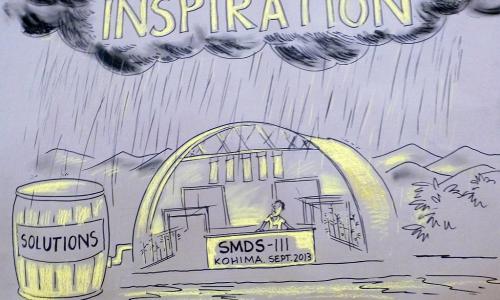
The Himalayan region in India covers about 5 lakh square km and consists of ten states and two districts, inhabited by approximately 64 million people as per the 2001 census. Water resources in the region are under stress due to increasing population, erratic rainfall and winter aridity due to climate change.
The mountain states of India face common issues and challenges. Similarly, mountain peoples across the Himalayan region have realised that the solutions to meet these challenges are also similar. Implementing them will become easier if the states work together. A common front will make it easier for the Himalayan States to present their strategies for development to the Centre.

With this end in view, the Indian Mountain Initiative (IMI) was conceived by the Central Himalayan Environment Association (CHEA) in 2010 at Nainital. It attempts to provide a platform for sustained and effective dialogue to bring mountain concerns to the national and global agenda. The initiative brings the eleven mountain states of the Indian Himalayan Region (IHR) including the hill districts of Assam and West Bengal onto this platform.
The 3rd Mountain Summit was held in Kohima, Nagaland in September 2013 around the themes of forest, water, and agriculture.
Rather than invite papers from selected authors and presenters, the summit chose an approach designed to maximise participation. Contributions in a variety of forms, including papers, articles, photos and movies were invited from a wide array of people. These were collated and their points included in a synthesis paper which was circulated to all the delegates in advance of the summit. This paper then provided a base document for the deliberations during the summit. This ensured that instead of a limited number of speakers, people across the mountain states including those who could not be physically present at the summit could have their say. Each theme was managed by a group of anchors who were responsible for collating the submissions and providing direction to the discussions.
The water theme was organised around four issues :
- Water conflicts
- Water rights and access (including governance and gender issues)
- Innovations and technologies for mountain water management/conservation
- Policy gaps and opportunities in water conservation and management
Climate change is a reality in the mountains, more than in any other part of the world. It influences every aspect of life in the Himalayan region. Conflicts are exacerbated by heightened water insecurity, which also affects peoples' access to water. Technologies need to take into consideration future weather and water behaviour in a changing world and policies for water conservation also need to keep an eye on future changes. Climate change was therefore a cross-cutting issue.
India Water Portal co-hosted the Water theme. We, along with the anchors, were responsible for inviting submissions for that theme, collating them, managing the sessions, as well as documenting the proceedings. The articles featured below present submissions received by the water theme, key presentations, interviews with some of the delegates, and videos of the summit proceedings.
Download the synthesis paper
Download the final presentations on water, forest and agriculture
/topics/mountain-summit-kohima-2013









